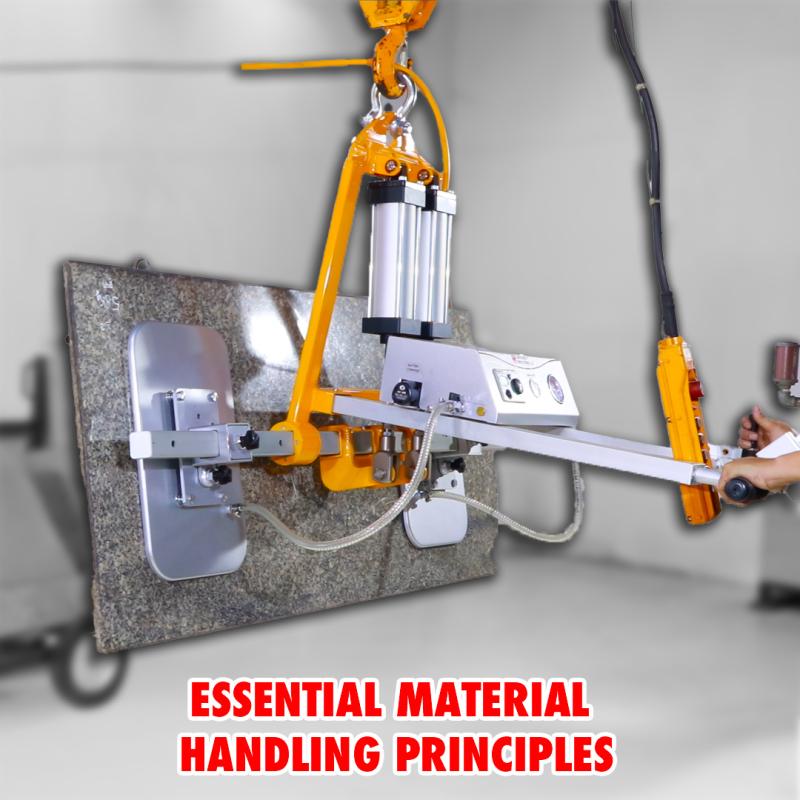



In this article, we explore the ten foundational material-handling principles—Planning, Standardization, Work, Ergonomic, Unit Load, Space Utilization, System, Automation, Environment, and Life Cycle Cost—and show how you can apply them to your operations. Along the way, you’ll discover practical tips, best-in-class lifting equipment, and strategic resources to elevate your material handling game. Material handling is the key of modern manufacturing, influencing productivity, safety, and cost across the entire production lifecycle. 
A robust planning process sets the stage for efficient handling material throughout your facility. By mapping each production step and consulting stakeholders—from procurement to quality control—you can pinpoint bottlenecks, safety gaps, and opportunities for improvement.
Engage department managers, process engineers, and floor supervisors in regular cross-functional meetings. Shared dashboards and workflow visualizations help ensure everyone understands throughput goals and risk factors.
Use flowcharts or digital twins to document material flow from receipt to shipping. Identify where manual transfers occur and consider alternatives—such as a Transport frame – Heavy duty solution—to reduce handling steps and accelerate cycle times.
Standardization ensures your material-handling equipment and procedures align with global best practices, reducing variability and maintenance downtime.
Define uniform load sizes, pallet configurations, and rack layouts.
Adopt standardized components—like forklift forks, ratchet tie down traps, and hooks—to simplify training and spare-parts management.
Regularly audit your processes against industry benchmarks to maintain compliance and performance.
Embrace digital work instructions and standardized inspection checklists to reinforce consistency across shifts and sites.
Streamlining work minimizes wasted motion and idle time, boosting throughput while protecting your team from overexertion.
Apply lean principles—value-stream mapping, 5S, and takt time—to remove non-value-adding steps.
Automate or eliminate manual lifts using devices such as the scissor clamp securely handles materials or lifting clamp systems.
Secure loads in transit with Ratchet straps can easily secure cargo, reducing damage and rework.
By optimizing task sequences and leveraging modular lifting equipment, you can dramatically improve cycle efficiency and worker satisfaction.
Ergonomics focuses on designing operations that prevent injury and fatigue, ensuring long-term workforce productivity.
Introduce adjustable workstations, lift-assist arms, and powered trolleys to reduce manual strain.
Train operators on safe postures and load-handling techniques.
Evaluate tools through an ergonomic lens—consider adding the Aardwolf Glass Lifter to handle delicate panels without risk of dropping or chipping.
Prioritizing ergonomic design not only enhances safety, but also lowers absenteeism and insurance costs.
The unit load principle emphasizes consolidating individual items into manageable bundles, optimizing transport and storage.
Select pallet sizes and container types that suit your product mix.
Use the Transport frame – Heavy duty for robust stackable loads, or Choosing the right slab lifter to handle large stone slabs.
Incorporate specialized clamps—like the Horizontal Stone Lifting Clamp and Block Lifting Clamps —to secure irregular shapes.
Proper unit-loading reduces handling steps, prevents damage, and lays the groundwork for just-in-time replenishment.
Maximizing your facility’s footprint can free up valuable real estate for higher-value activities.
Implement vertical racking, mezzanines, and cantilever racks for bulk inventory.
Reclaim aisle space by deploying narrow-aisle forklifts with attachments such as handle the forklift boom.
Consider specialized storage and transport solutions for bulky stone or glass components.
Streamlined layouts not only accelerate material flow but also improve safety by minimizing congestion.
A holistic system view weaves together all material-handling activities—from receipt to dispatch, inspection to claims processing.
Standardize how materials are:
Received
Inspected
Stored
Produced
Assembled
Packaged
Shipped
Transported
Handled for claims
Integrate Warehouse Management Systems (WMS) with ERP to synchronize inventory and order data.
Enable smooth overhead transfers with optimize gantry operations and train staff to operate a jib crane safely.
Develop clear Standard Operating Procedures (SOPs) for each handoff point.
By coordinating across internal teams and external partners, you’ll eliminate duplicate touches and expedite order fulfillment.
Automation can tackle repetitive, hazardous, or high-volume tasks—freeing your workforce for more strategic work.
Deploy robotic arms for welding, painting, or pick-and-place operations.
Use palletizers and automated guided vehicles (AGVs) to move heavy loads between stations.
Integrate advanced vacuum technology and vacuum lifter slab lifter systems to lift brittle materials without clamps or straps.
Automated solutions drive consistency, increase uptime, and help you meet stringent quality standards.
Sustainable material-handling practices reduce waste and demonstrate corporate responsibility.
Switch to recyclable or reusable containers and dunnage.
Repurpose defective parts or offcuts for secondary products.
Read how Stone Transport Redefined for eco-friendly transport-frame strategies.
Minimizing scrap, optimizing energy use, and embracing circular-economy principles ultimately lower operating expenses.
Assessing total life cycle cost (LCC) ensures wise investments in material handling equipment.
Account for purchase price, installation, training, maintenance, utilities, and disposal.
Compare energy consumption of different forklifts, clamp lifters, and conveyors.
Review financing options and residual values—see a revolutionary piece of material handling equipment as a case study.
By focusing on LCC rather than just upfront cost, you’ll optimize ROI over the asset’s entire lifespan.
For deeper dives into related topics, check out:
By embedding these ten principles in your operational blueprint, your manufacturing process will run smoother, safer, and more cost-effectively. Whether you’re evaluating new gantry crane material handling systems, upgrading to a scissor lifter, or partnering with leading material handling companies, these guidelines will help you achieve world-class performance in today’s competitive material handling industry.
Sign up to receive the latest info on new Aardwolf products, special offers and more.
By signing up you agree to receive emails from Aardwolf with news, special offers, promotions and other information. You can unsubscribe at any time.